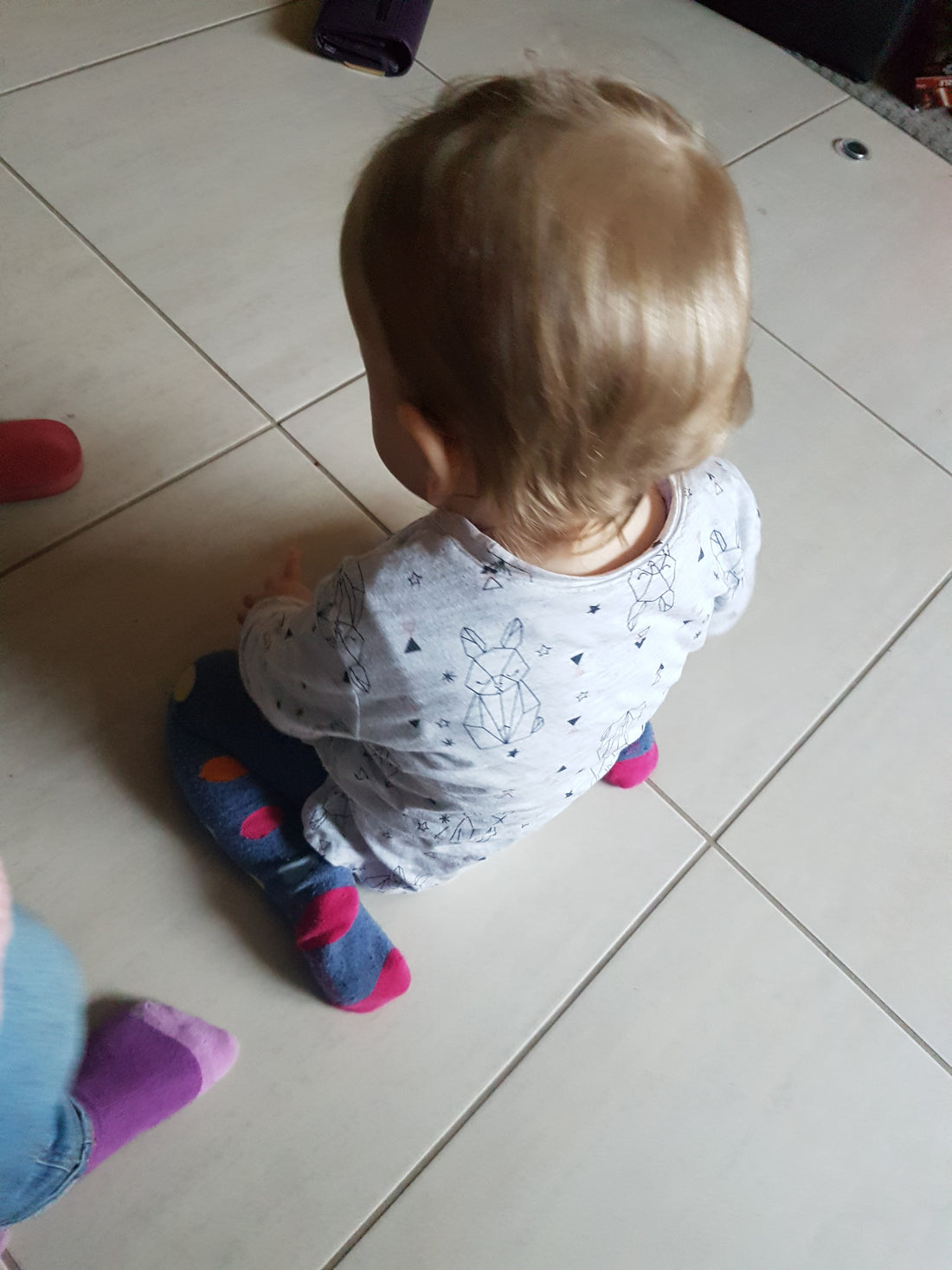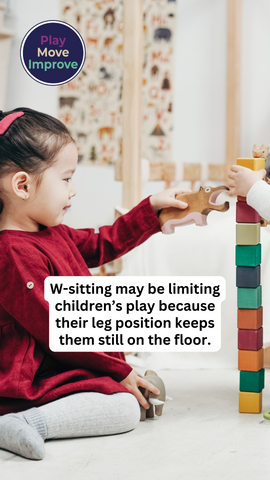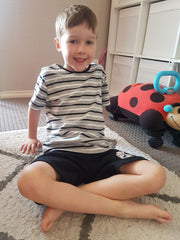
What is w-sitting? How to reduce w-sitting.
Share
What is w-sitting?
W-sitting refers to the seated position whereby children sit with their feet resting behind their bottom. It is termed 'w-sitting' because the legs make a W shape when viewing the child from a bird's eye view.
My concerns about w-sitting are:
- The core muscles are 'having a holiday' while a child sits in this position because the legs are holding the upper body up against gravity instead of the core muscles
- It is difficult for a child to transfer their body from this w-sitting position into a crawling position (compared to being in tummy time), learn more about the important of crawling here, and
- The hips are positioned in external rotation which is detrimental to long-term hip joint health.
- The feet are in plantarflexion position for a long period of time, which promotes 'tippy toe' walking, and further impacts lower limb flexibility and leg strength.
Click the image below to discover why w-sitting a concern for children's development, well-being and learning?
What poor core strength may look like
Looking at the images above, you can see that when sitting on your bottom with your legs crossed, your bottom is touching the ground and a small section of your ankles are touching the ground.
For children who have poor core strength, they may often rest back on to their hands (like the image above) to create more contact with the ground, or may sit in a w-sit position to help their body stay sitting upright. This provides the child with less opportunity to strengthen their core muscles, by resisting the forces of gravity.
The more body area (surface area) that makes contact with the ground, the less the core muscles need to work to keep the body sitting upright (as pictured below).
Don't forget to register for our w-sitting webinar recording - here
When to be concerned about children's w-sitting
It is common for young children under the age of 2 to sit in w-sitting position as they frequently move from a crawling action into this sitting position. Children under 2 are also more likely to change their play position quickly as their concentration span isn't as long as a toddler or preschooler, so they are less likely to spend a long period of time in this awkward sitting posture.
However, children aged 2 years and over should be able to sit with their legs in front of their body, and by the age of 3 years, children should be able to maintain a cross-legged position.
My w-sitting concern kicks in when I see preschoolers and primary school age
children spending more than 2 minutes sitting in this w-sitting position. I also worry about children who try to sit in cross-legged position but they need to lean up against a table, rest their forearms on their thighs, or rest their body weight through their hands, because their core muscles are lacking the necessary strength to maintain a seated position without support.
How to reduce w-sitting
The goal for breaking the habit of w-sitting (from an Exercise Physiology view) and encouraging a strong cross-legged posture, is to provide activities to encourage core strength, improve hamstring flexibility, develop crossing the midline skills, and remind the child about the importance of sitting in a cross-legged position instead of floppy/w-sitting positions.
In the meantime you can see a few simple play positions below that aim to transition a child from w-sitting to cross-legged sitting.
Want to know how to observe children's core strength?
Download our free core strength guide by signing up to our newsletter below.








2 comments
Great question Louise :) I would need to look more into this specifically for girls.
A nice clear explanation to share with families – thankyou. I thought it also had implications for girls and their pelvis development – was I wrong about that?